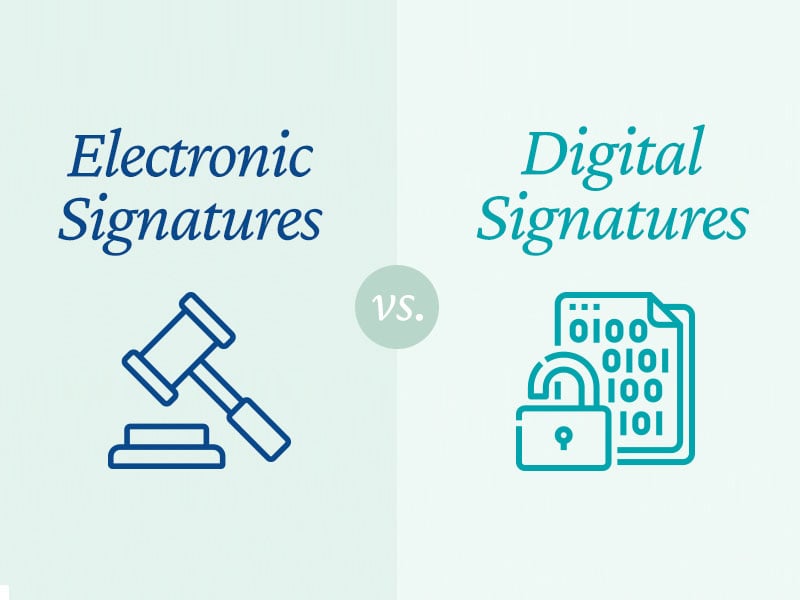Key Differences between Digital Signature and Electronic Signature

While both digital signatures and electronic signatures are used to sign documents electronically, they have some key differences in terms of technology, security, and legal recognition. Here are the main differences between digital signatures and electronic signatures:
-
Technology:
- Digital Signature: A digital signature is a specific type of electronic signature that uses cryptographic techniques to ensure the authenticity, integrity, and non-repudiation of a document or message. It involves the use of digital certificates and asymmetric cryptography (public-key cryptography) to sign and verify signatures.
- Electronic Signature: Electronic signatures encompass a broader range of methods for signing documents electronically. They can include various types of signatures, such as simple images of handwritten signatures, scanned signatures, biometric signatures, typed names, or checkboxes indicating agreement. Electronic signatures may not always involve cryptographic techniques.
-
Security:
- Digital Signature: Digital signatures typically offer a higher level of security compared to other types of electronic signatures. They use cryptographic algorithms to create a unique digital fingerprint (hash) of the document, which is then encrypted with the signer's private key. This provides strong authentication, integrity, and non-repudiation.
- Electronic Signature: While electronic signatures may offer some level of security, they may not provide the same level of assurance as digital signatures. Depending on the method used, electronic signatures may lack cryptographic protection and could be more susceptible to tampering or forgery.
-
Legal Recognition:
- Digital Signature: Digital signatures are generally recognized as having a higher legal status and are often subject to specific legal frameworks and regulations, such as the Electronic Signatures in Global and National Commerce Act (ESIGN) in the United States or the eIDAS Regulation in the European Union. They are widely accepted for various types of transactions and contracts.
- Electronic Signature: Electronic signatures may have varying degrees of legal recognition depending on the jurisdiction and the specific circumstances of the signature. While they are often legally valid for many types of agreements and transactions, their legal status may be subject to interpretation or dispute in some cases.
-
Technology Complexity:
- Digital Signature: Implementing digital signatures involves more complex cryptographic techniques, including the use of digital certificates, public-key infrastructure (PKI), and cryptographic algorithms. It requires key management practices to safeguard private keys and ensure the security of signatures.
- Electronic Signature: Electronic signatures may be simpler to implement and use, as they can encompass a wide range of methods, from basic image captures to more sophisticated biometric authentication. They may not require the same level of infrastructure and technical expertise as digital signatures.
In summary, while digital signatures offer stronger security and legal recognition due to their use of cryptographic techniques and compliance with specific regulations, electronic signatures provide more flexibility and simplicity in signing documents electronically, albeit with potentially varying levels of security and legal status. The choice between digital signatures and electronic signatures depends on factors such as the desired level of security, regulatory requirements, and the specific use case.
Thank you,
